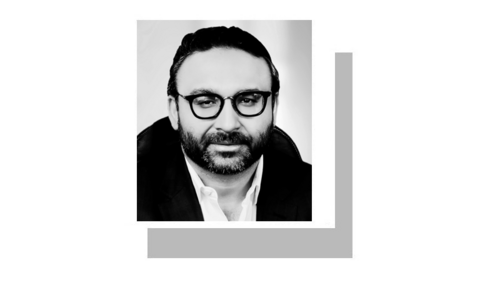TRIPOLI, Aug 14: Abdullah got it about right. Picking his fingernails in the ticket office of the local bus station, he lowered his eyes. He had seen everything; the severed arms and legs of Lebanese soldiers, the still uniformed but headless infantryman slumped out of the window of the mini-bus round the corner, and the bodies of all the little people who die when bombs go off here: the old man who sold sandwiches to the troops, the lemonade salesman, the child who polished shoes. All dead, of course. “Collateral damage” to the man who left the bomb in a bag on the pavement at 7.45 on Wednesday morning. “We think it was either Fatah al-Islam or some unknown forces,” Abdullah said. “Why do you ask?”
Why indeed. Fatah al-Islam, a Salafist version of Sunni Islam, is a weird Al Qaeda satellite which held out against the Lebanese army in the Palestinian Nahr el-Bared camp, north of here, last year at the cost of 400 deaths and the flight of 40,000 civilians.
Most Lebanese concluded that they were implanted in Lebanon’s soil by Syria.
But Wednesday’s bomb in Lebanon’s second city, the ancient crusader port of the Chateau de Saint Gilles, disfigured by massive unemployment and grotesque advertising hoardings, was of Iraqi proportions: 15 dead, nine of them Lebanese soldiers, and 50 wounded.
Gunfire crackled like broken matchsticks across Tripoli as the local “martyrs” were buried. Most had been queuing for buses to the south, alongside the usual bus drivers – six of them – sipping coffee on the pavement.
One of them, Kasser Chebli, had turned up as usual and began to drink his morning coffee, and woke up in hospital, minus one leg. On the streets, the printed funeral notes told their own story.
“The Martyr Mohamed Mustapha Mrai,” it said in beautifully printed Arabic script above an army identity photo of the young man. “The martyr who died in the Tripoli bomb,” the funerary notice added.
But who were Abdullah’s “other forces”? A walk down Syria Street – and yes, that really is the name of this shattered, burned-out, bullet-spattered thoroughfare – provides a few terrifying clues. It divides the large Sunni district of Tripoli from the tiny Alawite community.
The Sunnis are generally loyal to Saad Hariri, son of the assassinated ex-prime minister whose Future Movement now forms part of the government in Lebanon.
The Alawis are, as the saying goes, an “offshoot” of Shia Islam and are close to Syria for a very obvious reason: President Bashar al-Assad of Syria is an Alawi and so are most of the powerful men in Syria.
The soldiers murdered in Wednesday’s bomb were members of a large military force deployed after Sunni-Alawi sectarian gunbattles had killed 22 Lebanese and wounded another 68 in June and July alone. The battles still continue.
Syria Street is a shameful place of ethnic cleansing, of burned-out apartments and smashed shops, of fear and unemployment. “Don’t stand here any longer because you can be shot from the top of the side road,” Rabih al-Badawi quietly informed me as we inspected the wreckage.
Rabih’s business card says he is in “general trading”, but his “trading” took a blow this summer when he refused to pay protection money to local gangs. He takes me through his upper offices, carbonised, trashed, looted, his remaining windows starred with bullet holes. Outside, bullets crackle in the hot afternoon. It’s like a return to the old Beirut of the war.
“Look at these shops,” Rabih tells me as we stroll down Syria Street with a grotesque display of self-confidence. “This is Alawi-owned. Bullet holes in the door. This is Alawi. The same. These are Sunni shops: all burned out.”
Was all this, perhaps, the work of Abdullah’s “unknown forces”? “I think this is the work of weapons’ dealers,” Rabih replies at once. “They want to sell guns. So here everyone needs a gun because everyone is frightened. So the place has filled up with guns. The army does nothing. Why not? Don’t they know the names of the gangs? Don’t they know who is behind this?”
I take a drive round the corner to the slums of the little Alawi community, and there is Ahmed Saadedin, sipping coffee opposite another row of “martyrs” pictures, this time of Alawis, who says, correctly, that at least 9,000 Alawi refugees have fled their homes here.
“The violence started after Hariri’s assassination (in Feb 2005),” Ahmed says. “When Syria’s forces were here, all Lebanon enjoyed security.” Which – if you forget the presence of 40,000 Syrian troops, two Israeli invasions and a 15-year civil war – is an absolutely correct statement.
The truth is that Tripoli has slunk back into the civil war, block after block of gaunt, workless homes in which the Salafists and the “Al Islamists” and the haunted young men who have returned from their ‘jihad’ against the Americans in Iraq now nestle and ponder a dangerous, frightening future amid these disgraceful battles.
In Tripoli, the fears of every Lebanese are brought to fulfilment; it’s the cold fear of those “outside forces” that roam throughout the Middle East.
—Dawn-Independent News Service














































Dear visitor, the comments section is undergoing an overhaul and will return soon.